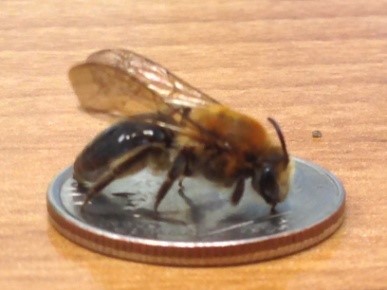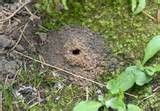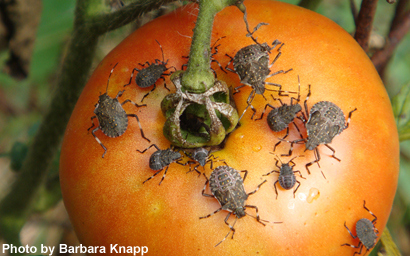Mosquito Season is Coming Are You Ready
It is difficult not to get excited about late springtime in New Jersey. The weather tends to be gorgeous, flowers begin blooming, and everything gets a nice dark green after months of snow and slush. However, summertime means Mosquito Season, and you may have already noticed the tiny insects clamoring for your blood every time that you step outside your home.
Mosquito bites are more than an itchy nuisance; they can transmit diseases.
Most people are familiar with the uncomfortable itching associated with mosquito bites. What you may not realized, however, is that mosquito bites carry a risk of transmitting disease from the mosquito to a human being.
Mosquitos are not just a health risk for humans; they also carry diseases that can impact our pets. Malaria, West Nile Virus, and heartworms are just a few of the serious diseases that mosquitos can transmit to humans or companion animals. In fact, mosquito bites continue to be one of the main vectors for disease transmission.
You don’t have to resign yourself to mosquito bites.
While mosquitos can seem ingenious, seeming to come in the house through locked doors and windows, and lurking in wait every time you step outside of your house, the reality is that we understand how mosquitos track people. This understanding makes it easy to take a few simple steps to prevent mosquito bites. Wear protective clothing when you anticipate exposure to mosquitos. Use a mosquito repellent. Perhaps most important, especially if you spend a significant amount of time outdoors, you can have your yard treated for mosquitos.
At Viking Pest control, we use the Yard Guard System to protect you from mosquitos during Mosquito Season. Unlike temporary yard foggers, Yard Guard targets breeding populations of mosquitos, reducing your overall exposure to the pests and making your outdoor living space that much more enjoyable . Of course, because mosquitos are mobile, no system can completely eliminate your risk of exposure. This is a critical factor, especially when West Nile virus has been detected in an area. For full safety, we still recommend the use of additional measures, such as the use of a DEET containing bug spray, when outside, especially at night, to give yourself added protection.
Call Viking Pest Control today and talk to one of our pest control experts to find out how easy, reliable, and affordable mosquito control can be.
Gerbils and the Plague
In what may be the biggest news about pests since literally the Middle Ages, scientists are beginning to think that the rat, long blamed for the Black Death that killed off millions of Europeans, was not responsible for spreading the disease. Actually, scientists have long known that the rat was not directly responsible for spreading the Bubonic Plague. The rats were, instead, suspected to be hosts for the fleas that spread the Plague, and when rats came near homes, people, or pets they could transmit the fleas, who would then bite people and spread the devastating disease.
While scientists still agree that fleas were the hosts responsible for spreading the Plague directly to humans, instead of arriving on the back of threatening, scary-looking rats, they now think these fleas arrived on the backs of cute and cuddly gerbils. That is right; the most deadly contagious disease to impact humankind in all of known history was probably spread by an animal many of us have kept as a pet.
Nils Christian Stenseth, an evolutionary ecologist at the University of Oslo began to question the idea of rats as the hosts for the Plague by observing the number of rats still in Europe and contrasting it with the fact that the Plague is no longer found in European cities. The Plague is, however, still found in Asia, where it happens to be carried by gerbils. The theory is that the gerbils brought the Plague to Europe from Asia. Climate records suggest that during periods of harsh climates, there would have been mass die-offs in the gerbils’ population, prompting their parasites, including the Plague-carrying fleas, to seek other hosts, including animals and humans traveling through Asia and eventually into Europe. To read more on Gerbils Likely Pushed Plague To Europe in Middle Ages Click Here
So, should you ditch your child’s pet gerbil, just to be safe? No. Pet store gerbils are far removed, both in time and place, from their Asian ancestors and do not carry the Plague.
And, does that mean you should not worry if you see a rat in your home? Absolutely not. First, rats were definitely the carriers for the Plague outbreak in America in the start of the 20th century. Second, rats carry a wide variety of diseases that go far beyond the Plague.
Whether your pest problem is rodents or the fleas they carry, Viking Pest Control has the solution to your pest problems.
Carpenter Ants What are Carpenters doing in my garden?
Carpenter ants – What are Carpenters doing in my garden?
By Gregory Covello, A.C.E.
While tending your garden you notice large black ants. You tell yourself that these ants can’t be Carpenter Ants, because Carpenter Ants eat wood, not my garden. However you notice these large ants crawling on plants and they seem to be interested in vegetable leaves. What’s going? You have Carpenter Ants.
How much wood does a Carpenter Ant eat?
While some people may still be trying to figure out how much wood a woodchuck can chuck, I would like to answer the question “How much wood does a Carpenter Ant eat?” The answer: None. Carpenter Ants are commonly referred to as carpenters due to their ability to chew wood, not their ability to eat it. Carpenter Ants (Camponotus species) will chew through wood to hollow it out in an attempt to create a nesting site. The galleries that these ants create in wood appear smooth as if sanded down with sandpaper by a carpenter. The neat work of the Camponotus ant contributed to its common name, the Carpenter Ant.Why are they on my plants?
Now we know that these large ants don’t eat wood, so what are they eating? Why are they in my garden? Why are they on my plants? Honeydew. I’m not referring to the melon here; I am referring to the secretion. Honeydew is a sweet sticky secretion that is primarily made by aphids, however can come from other plant pests such as whiteflies as well. This honeydew supplies the Carpenter Ants with the carbohydrates that they crave and is most likely the reason that you have these ants in your garden. There is another possible reason as to why these ants may be calling your garden their own. Carpenter ants will hollow out lumber, firewood, stumps, trees and other wood. If you are utilizing railroad ties or other lumber to construct raised beds, you may want to consider a close inspection. As noted earlier, Camponotus chew wood. As they excavate their galleries, the ants carry the chewed wood (often referred to as frass) to an open area. Often this excavated sawdust is dropped into a pile. Piles of unexplained sawdust near your lumber may now have an explanation; you have an active Carpenter Ant situation. An active Carpenter Ant situation in your garden in itself is not necessarily bad however it may be an indication of other issues. If you notice what appears to be large ant (or any ant for that matter) resting on a leaf, you may want to take a closer look. Ants like honeydew. Their craving for honeydew has created a symbiotic relationship with the aphids that produce the honeydew. Therefor what may appear to be an ant resting on a leaf may actually be ant protecting some aphids. Check the underside of the leaves of your plants. You may need a magnifying lens, as aphids are very small. Aphids will damage and potentially destroy your plants, so the presence of Carpenter Ants on your plants may have actually helped you identify a real problem in your garden. After conducting a thorough inspection, treatment should be considered. If the ant infestation is limited to plants only, consider treating the underlying problem: the aphids. If you identified sawdust and damage to wood you may want to consider treating the areas where the damage was noted with an appropriate pesticide (read the label before choosing or using the product). There are a variety of products on the market to help you achieve your treatment goal. Low impact products containing diatomaceous earth may help solve low-level situations. Another simple solution may be removing the infested wood (bedding lumber, firewood, that old wooden shed you have been meaning to demolish, etc.) If nests are located in firewood you should probably consider burning that wood outdoors (fire pits, chimineas, etc.). Do not bring infested wood indoors as doing so may risk infesting your home. Severe situations such as damaged trees and the presence of Carpenter Ants indoors may require a professional inspection and/or treatment. Gregory Covello, ACE is an Associate Certified Entomologist and District Manager for Viking Pest Control based out of Warren, Somerset County. He is a back yard gardener and hobbyist bee keeper. He can be reached at 973-296-6523 or gcovello@vikingpest.com.Winter Break For Pests? Not For All of Them
By Gregory Covello, A.C.E.
(Associate Certified Entomologist)
Winter is normally a time when our focus on pests in the garden is at its least. The majority of the insect world is taking a break from visiting our gardens, orchards, and farms. However, not all pests take a winter vacation. The time is now that we take a look for signs of common rodents.
Winter
During the winter months most of the resources that rodents rely on dwindle. However, if you utilize winter cover crops, some of the much needed food sources for rodents still may exist throughout the winter. Inspect your grounds for trails or burrows that mice and rats may leave behind. Check for disturbances in leaf litter, soil, and vegetation. Trails will occasionally have rodent droppings present as well which will help you properly identify what rodent may be paying you a visit. Mice have pointed droppings approximately ¼ inch and rats have rounded blunt droppings approximately ¾ inch.House Mouse (Mus musculus)
The most common winter pest is the house mouse (Mus musculus). The house mouse is a small rodent about 3-4 inches (head to tail) in length as an adult. Most commonly this type of mouse will have grey fur. The house mouse is classified as an omnivore however plant material is its primary choice diet. Any plant material can provide the house mouse with the nourishment it needs to survive the colder months. If a winter cover crop strategy is used, make sure you are inspecting your ground cover. Winter greens not only provide the house mouse with food, but a good ground cover provides the house mouse with shelter from the harsh cold environment.Rattus Norvegicus
Another pest that growers commonly encounter in the colder months is the Rattus norvegicus. This rodent is referred to by many common names including the brown rat, Norway rat, common rat, and sewer rat. Despite the common name “brown rat”, the Rattus norvegicus can and commonly does have grey fur as well as brown fur. An adult rat is about 15-20 inches (head to tail). A brown rat is the epitome of an omnivore. There is very little that a rat will not eat. Gardeners and growers that have encountered brown rats would agree that corn is a commonly unrecognized favorite food. Unlike the smaller house mouse, the rat needs an ample water supply to survive through the rough winter months.Integrated Pest Management Strategies
If you have identified either of these common winter pests roaming your grounds, it is time to implement (or revisit) an IPM (integrated pest management) strategy. Without a good IPM plan in place, the rodent population will be doing the majority of the blooming come the spring. Both mice and rats have quick reproductive cycles. Now is the time to manage outdoor populations of rodents as breeding often ceases during winter months. Remember, as with any IPM plan, the use of pesticides should be reserved as a last step. Start by removing harborage sights such as leaf litter and old abandoned equipment. (Spare tires, a broken down tractor, unused storage containers, etc) Search for any items that may be accumulating water and remove them. If weather permits, inspect and turn your mulch piles. Mulch may contain numerous sources of food if the pile isn’t properly managed. Monitor burrows by collapsing them or filling them with soil. If the burrows reappear within a few days, you have confirmed activity. Often landscape modification and good grounds maintenance is enough to expose mice and rats to predation. If these winter visitors still persist after implementing a cleanup strategy, trapping should be considered as the next step. As a final step, rodenticide baits and powders can be utilized. Be aware of local and state laws before applying any pesticides, or contact Viking at 1-800-618-2847 Now is the time to get an early start to the growing season this year by implementing your winter rodent IPM plan. Editor’s note: Gregory Covello, ACE is an Associate Certified Entomologist and District Manager for Viking Pest Control based out of Warren, Somerset County. He is a back yard gardener and hobbyist bee keeper. He can be reached at gcovello@vikingpest.com.Why are bed bugs such a problem
In the winter holiday season, which lasts from the weekend before Thanksgiving until the weekend after New Year’s day, millions of Americans spend their time traveling to see family and friends, or simply taking vacation opportunities while children are off from school and most workplaces are experiencing a slowdown. Over Thanksgiving weekend, alone, over 46 million Americans traveled more than 50 miles from home. While many of these travelers stay with friends and family, many others stay at hotels.
Mild Bed Bug Infestation
In addition to souvenirs, presents, and holiday leftovers, many holiday travelers may find that they have brought home unwanted guests with them after the holidays. Travel to different locations can expose people to pests that they do not encounter on a normal, every-day basis. A relative’s home may have a flea infestation, and you may find that you or your furry friends have brought home fleas or ticks to a home that was previously pest-free. Worse, you may find that you are one of those unlucky people that have been exposed to bed bugs during your travels. This is because bed bugs are hitchhikers. Moreover, someone with a mild bed bug infestation may not even be aware of the problem because early infestations tend to be asymptomatic.Why are bed bugs such a problem?
After all, unlike many other pests, bed bugs are not associated with any type of disease transmission. In addition, many people have relatively benign reactions to bed bugs. The real problem comes when there is either a severe infestation or a combination of sensitive individual and bed bugs. In those circumstances, the bed bug bites can cause severe itching, and the scratching that results can actually be a source of secondary infection for individuals.Best Treatments to Detect Bed Bugs
If you think that you may have been exposed to bed bugs, you may have a problem detecting the infestation in its early stages, which is exactly when you want to catch it to make eradicating the pests easier! Viking Pest Control uses the best technology available to help detect bed bugs- two beagles named Hagar and Helga who are NESDCA certified inspectors. They can uncover infestations that might evade human senses and help us help you tackle a bed bug problem! While Viking Pest Control can help with even severe infestations, the earlier, the better, because bed bugs reproduce extremely quickly. In addition to other methods, Viking uses a proven heat treatment to eradicate bed bugs much more quickly than other treatment approaches.The world’s most deadly animal
Do you know what the world’s most deadly animal is?
Is it sharks?
There is a lot of hype behind shark attacks but sharks are only responsible for 5-15 deaths worldwide per year.How about Lions?
In North America you can expect 1-2 deaths from Lion attacks in a typical year.Could it be something smaller?
Could be something that we typically encounter almost daily on a hot summer day? Have you figured it out?Mosquito - osMt Deadly Animal
The most deadly animal that a human can encounter is a mosquito. Mosquitos are responsible for approximately 700,000 to 1,000,000 deaths world-wide per year. Mosquitos world-wide are responsible for the transmission of Malaria. Locally Mosquitos have been reported to be carriers of Eastern Equine Encephalitis and West Nile Virus all of which are potentially fatal disease. Recently a concern was raised in the United States that a virus, chikungunya, a disease predominately found in the Caribbean is making its way into the states as well. If you are interested in finding out how you can protect yourself and your family from the potential hazards of deadly mosquitos, give us a call. Our specialized protection plan and some helpful advice can go a long way! #mosquitos #chikungunya #vikingpestThe Digger Bee
They're Back!! - Digger Bees
 The Digger Bee has returned and is terrorizing gardeners and homeowners throughout our service area. Have you seen mounds appearing in your lawn or garden?
Is there a tiny bee that moves very quickly frequenting that mysterious mound? If you answered yes, the Digger Bee has found you!
The Digger Bee has returned and is terrorizing gardeners and homeowners throughout our service area. Have you seen mounds appearing in your lawn or garden?
Is there a tiny bee that moves very quickly frequenting that mysterious mound? If you answered yes, the Digger Bee has found you!
 This bee is a solitary bee, meaning, there is no Queen, and there is no colony. Instead, each mound is an indication of an individual nest. BUT, don’t let the fact that the digger bee is “solitary” fool you! Once a digger bee finds a suitable terrain (if you have them, they thought that your terrain was suitable) they may visit you to the tune of hundreds, if not thousands!
Give us call today to eradicate your issue before the Diggers lay claim to your lawn and garden!
This bee is a solitary bee, meaning, there is no Queen, and there is no colony. Instead, each mound is an indication of an individual nest. BUT, don’t let the fact that the digger bee is “solitary” fool you! Once a digger bee finds a suitable terrain (if you have them, they thought that your terrain was suitable) they may visit you to the tune of hundreds, if not thousands!
Give us call today to eradicate your issue before the Diggers lay claim to your lawn and garden!
Pest-Proof Your Home
April is “National Pest Management Month” - Pest Controllers offer tips
Disseminated by The Caruba Organization
Alan Caruba
April is National Pest Management Month and with the advent of spring, Leonard Douglen, the Executive Director of the New Jersey Pest Management Association, reminds homeowners that pest-proof one’s home protects against “threats to health and, importantly, damage to one’s greatest investment.”
“Nationwide, termites will do $5 billion dollars of damage to homes and other structures this year,” says Douglen. “Here in New Jersey, as many as three out of every five homes are likely to have active termite colonies and all are subject to a termite infestation because the warm weather triggers the huge numbers of winged termites that will establish new colonies.”
Annual Inspections
“Without annual inspections, most homeowners are unaware they have an active colony of termites until it has been in place for three or four years,” says Douglen. “When they notice winged termites, usually around window sills, they call a pest management firm. An inspection of one’s home will not only identify the presence of termites, but initiate measures to both eliminate them and deter future infestations.”Carpenter ant infestation
Inspections may also find colonies of carpenter ants. In addition to termite infestations, Douglen says that “Carpenter ant infestations can be just as devastating to a home or other structure, but they don’t get the same amount of publicity. An entire colony of Carpenter ants can emerge from winter hibernation and enter a home in the thousands in a single day.”Rodent Control
In the late fall and winter rodent species, looking for a warm harborage, invade homes, “Once inside, they will chew on wires and pose a threat of fire. Since rodents urinate and defecate wherever they go, the potential for diseases increases, particularly when they invade food storage areas.” Do-it-yourself pest control efforts usually fail. “That’s when pest management professionals get the call and that’s when their expertise and the means to trap and control mice and rats demonstrate why their training is essential to controlling such problems.” As if rodents weren’t bad enough, many homes in New Jersey commonly suffer invasions by squirrels and bats. “Sealing cracks in the home’s foundation, storing firewood away from the home, cutting back tree limbs that provide access to the roof, and many other steps will be recommended by a professional pest management technician.”Wasps and Yellow Jackets
A wide variety of insect pests can over-winter in a home. Wasps and Yellow Jackets will hibernate in void areas under the roof and emerge when the weather turns warm to begin new colonies and build nests.Cockroaches
Cockroaches are nature’s greatest survivors and even a few can swiftly multiply into hundreds once the weather triggers their instinctual behavior New Jersey is home as well to a thriving population of raccoons and opossums who think that garbage cans are open-air cafeterias. “Taking care to ensure that trash containers are tightly sealed can go far in avoiding unwelcome visitors,” says Douglen. “Mother Nature never takes a vacation and affords insect and rodents pests, as well as other creatures many opportunities to reproduce in staggeringly high numbers. A home with its warmth, its ample supplies of food and water, and its wood components are magnets for pests of every description.” Founded in 1941, the New Jersey Pest Management Association’s member firms are all licensed and certified by the Department of Environmental Protection. It maintains an Internet site at www.njpestcontrol.com with information about firms throughout the State and about various pest species.Stink Bug Traps in Gardens
Stink Bug Traps in Gardens may Increase Damage to Tomatoes
March 25, 2014 by Entomology Today The invasive brown marmorated stink bug (Halyomorpha halys) is an important pest of fruits and vegetables. To counter them, some home gardeners use pheromone-baited traps that are designed to attract, trap, and exterminate them. However, new research from entomologists at the University of Maryland suggests that the traps may actually increase stink bug damage to tomatoes. The researchers asked 15 gardeners to place stink bug traps at the ends of rows of tomatoes, while another group of 14 placed no traps in their gardens. Both groups experienced nearly the same amount of stink bugs on the tomato plants themselves, but the the abundance of stink bugs on the tomato fruits was marginally greater in the gardens with traps, and the fruits sustained significantly more injury than tomato fruits grown in gardens without traps. Furthermore, tomato fruits on plants near the traps housed more stink bugs than tomato fruits on plants that were away from the traps.
“We found no evidence that stink bug traps protected tomatoes from H. halys,” the authors wrote, “and it appears that the addition of traps to gardens may increase injury to tomato fruits.”
The increased damage may have resulted, in part, because of a phenomenon known as “trap spillover,” which can occur when pests arrive in the general vicinity of a trap and rest on vegetation before entering and being captured by the trap.
“This study presents evidence that placement of an attract-and-exterminate stink bug trap near a plant may actually result in greater abundance of stink bugs on the fruit,” the researchers wrote. “Vegetable gardens with traps may sustain more injury than those without traps.”
The researchers asked 15 gardeners to place stink bug traps at the ends of rows of tomatoes, while another group of 14 placed no traps in their gardens. Both groups experienced nearly the same amount of stink bugs on the tomato plants themselves, but the the abundance of stink bugs on the tomato fruits was marginally greater in the gardens with traps, and the fruits sustained significantly more injury than tomato fruits grown in gardens without traps. Furthermore, tomato fruits on plants near the traps housed more stink bugs than tomato fruits on plants that were away from the traps.
“We found no evidence that stink bug traps protected tomatoes from H. halys,” the authors wrote, “and it appears that the addition of traps to gardens may increase injury to tomato fruits.”
The increased damage may have resulted, in part, because of a phenomenon known as “trap spillover,” which can occur when pests arrive in the general vicinity of a trap and rest on vegetation before entering and being captured by the trap.
“This study presents evidence that placement of an attract-and-exterminate stink bug trap near a plant may actually result in greater abundance of stink bugs on the fruit,” the researchers wrote. “Vegetable gardens with traps may sustain more injury than those without traps.”National Young Entrepreneur Award
Viking Pest Control President presented with National Young Entrepreneur Award
Viking Pest Control President Ryan Bradbury was presented with the National Young Entrepreneur Award at NPMA’s (National Pest Management Association) PestWorld, this year in Phoenix, AZ. Bradbury was recognized with the second annual Young Entrepreneur Award. "The NPMA Young Entrepreneur Award is a new industry award established to recognize young entrepreneurs working in the professional pest management industry who have helped create or develop an industry, business, or have stewarded a meaningful industry concept to fruition," said presenter John Myers. "Amazingly, some of our nominees this year have done all of these things." Bradbury, who worked as an equity trader and for Schering Plough prior to joining the family business, has played in integral role in Viking’s recent growth the past 12 years. Since Bradbury came on board, the company has grown by 350 percent. Bradbury has been an active NPMA member, serving on numerous committees. He’s also been active in local charities/organizations, such as the Association of Retarded Citizens of Somerset County, and he donates blood every eight weeks for the last 9 years. Ryan is a board member of NJPMA and Quality Pro.
Bradbury thanked NPMA for the recognition, which he said he shares equally with his other family members involved in the industry, dad Ed Bradbury, and brother Dan Bradbury. “It was certainly a surprise and a great honor,” said Bradbury. “I really think that there is a great generation of people in the industry right now — people in the same age-frame as me — that are doing great things, so to be chosen is really flattering.” “Most importantly, I’d like to thank my team members at Viking Pest Control who make me look better than I am. In my heart, I know those great employees make Viking the great company it has become.”
Bradbury, who worked as an equity trader and for Schering Plough prior to joining the family business, has played in integral role in Viking’s recent growth the past 12 years. Since Bradbury came on board, the company has grown by 350 percent. Bradbury has been an active NPMA member, serving on numerous committees. He’s also been active in local charities/organizations, such as the Association of Retarded Citizens of Somerset County, and he donates blood every eight weeks for the last 9 years. Ryan is a board member of NJPMA and Quality Pro.
Bradbury thanked NPMA for the recognition, which he said he shares equally with his other family members involved in the industry, dad Ed Bradbury, and brother Dan Bradbury. “It was certainly a surprise and a great honor,” said Bradbury. “I really think that there is a great generation of people in the industry right now — people in the same age-frame as me — that are doing great things, so to be chosen is really flattering.” “Most importantly, I’d like to thank my team members at Viking Pest Control who make me look better than I am. In my heart, I know those great employees make Viking the great company it has become.”











